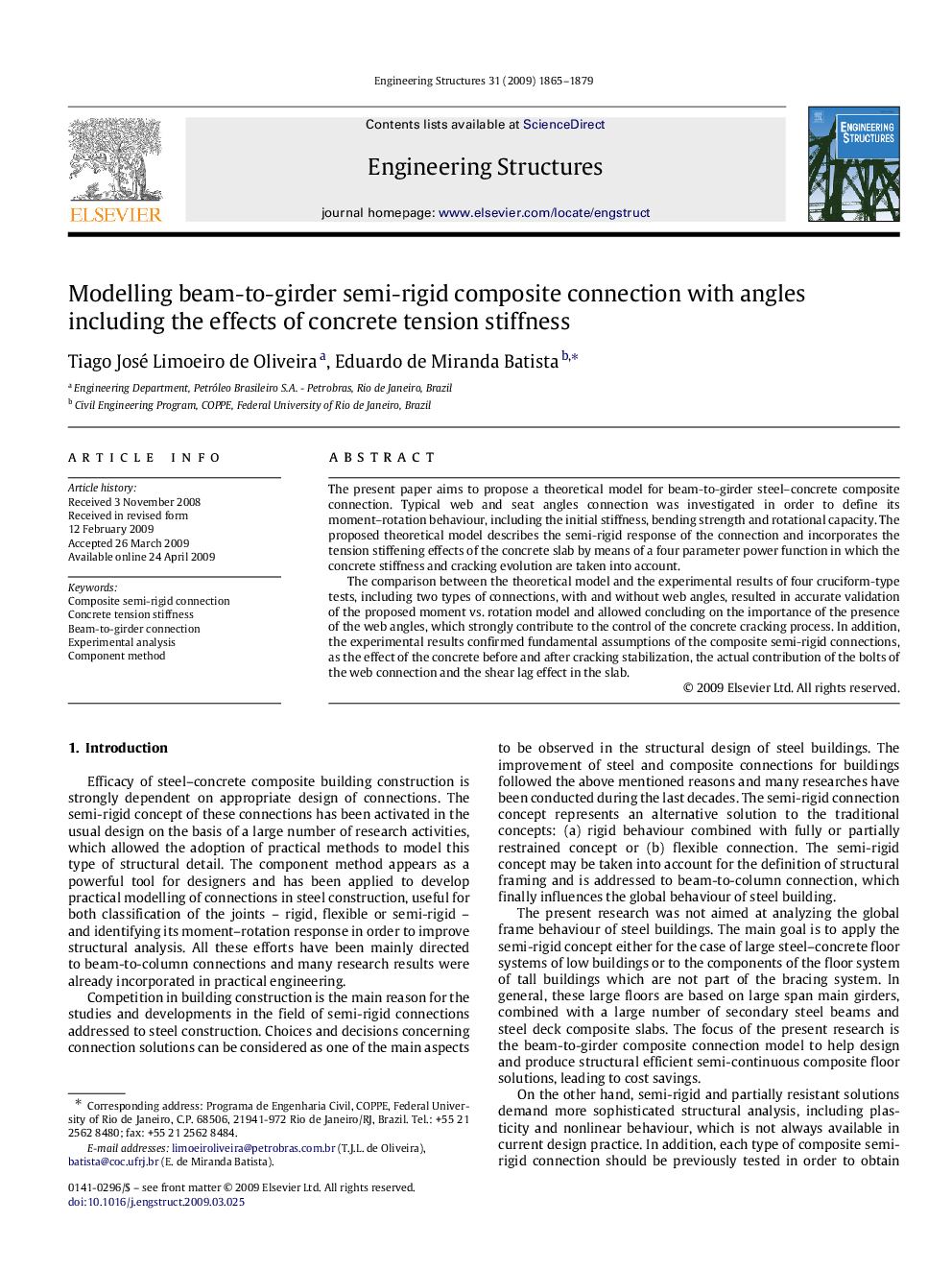| Article ID | Journal | Published Year | Pages | File Type |
|---|---|---|---|---|
| 268416 | Engineering Structures | 2009 | 15 Pages |
The present paper aims to propose a theoretical model for beam-to-girder steel–concrete composite connection. Typical web and seat angles connection was investigated in order to define its moment–rotation behaviour, including the initial stiffness, bending strength and rotational capacity. The proposed theoretical model describes the semi-rigid response of the connection and incorporates the tension stiffening effects of the concrete slab by means of a four parameter power function in which the concrete stiffness and cracking evolution are taken into account.The comparison between the theoretical model and the experimental results of four cruciform-type tests, including two types of connections, with and without web angles, resulted in accurate validation of the proposed moment vs. rotation model and allowed concluding on the importance of the presence of the web angles, which strongly contribute to the control of the concrete cracking process. In addition, the experimental results confirmed fundamental assumptions of the composite semi-rigid connections, as the effect of the concrete before and after cracking stabilization, the actual contribution of the bolts of the web connection and the shear lag effect in the slab.
